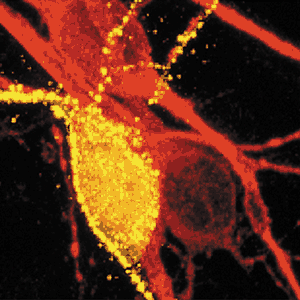| What is a Platypus?
Platypus venom causes pain in humans:
What makes platypus venom unique? |
 |
|
| What is a Platypus?
Platypus venom causes pain in humans:
What makes platypus venom unique? |
 |
|
How is Pain Caused in Humans ?
Intense noxious sensations are perceived
in the human body by specialized sensory receptors that are called nociceptors.
In the human body, nociceptors are found in almost all tissues. There
are four subclasses of nociceptors; thermal, mechanical, polymodal and
silent nociceptors. Each of these different nociceptors are usually
all found together and operate in conjunction with one another to sense
various kinds of stimuli that are harmful to human tissue. Thermal nociceptors
sense extreme temperature differences ( > 45 * C or < 5*C
) while mechanical nociceptors are activated by intense pressure applied
to body tissues. The polymodal nociceptors act as both thermal
and mechanical nociceptors. Silent nociceptors are found in the viscera
of the human body and are sensitive to chemical fluctuations only.
For the most part nociceptors are just free nerve endings that are scattered
throughout human tissue. All signals from the nociceptors travel
to the spinal column ( see picture above ) where these signals are taken
directly to the brain to be processes. Not much is known about the
signaling mechanism that causes the the sensation of pain other than it
is caused by " substance P ".
However, we do know that local enkephalin
containing interneurons are located in the same proximity where nociceptors
transmit "pain signals " at the spinal column. Local enkephalin containing
interneurons release enkephalin which inhibits the pre synaptic and post
synaptic signaling from the nociceptors to the neurons in the spinal column.
Even though it is not known exactly
how pain is caused, the recent discovery of opiate receptors on neurons
in the spinal column and brain stem have shown how pain can be inhibited
by drugs such as opium and morphine. The opiate receptors are activated
by morphine and signal enkephalin to be released from the local enkephalin
containing interneurons. This slows the signaling between nociceptors
and neurons in the spinal column and effectively prevents the sensation
of pain.
* Courtesy of the Pain Relief Foundation *